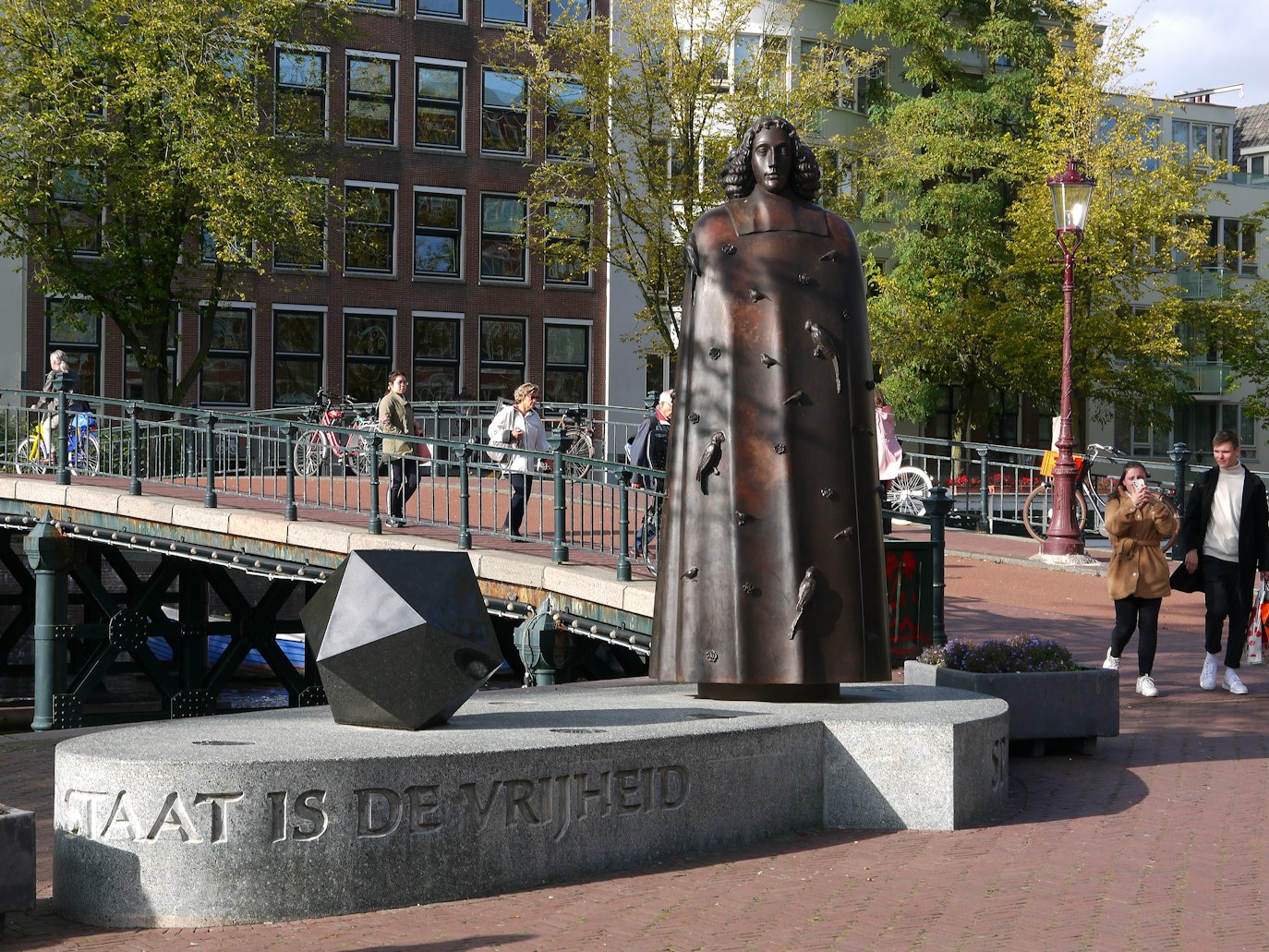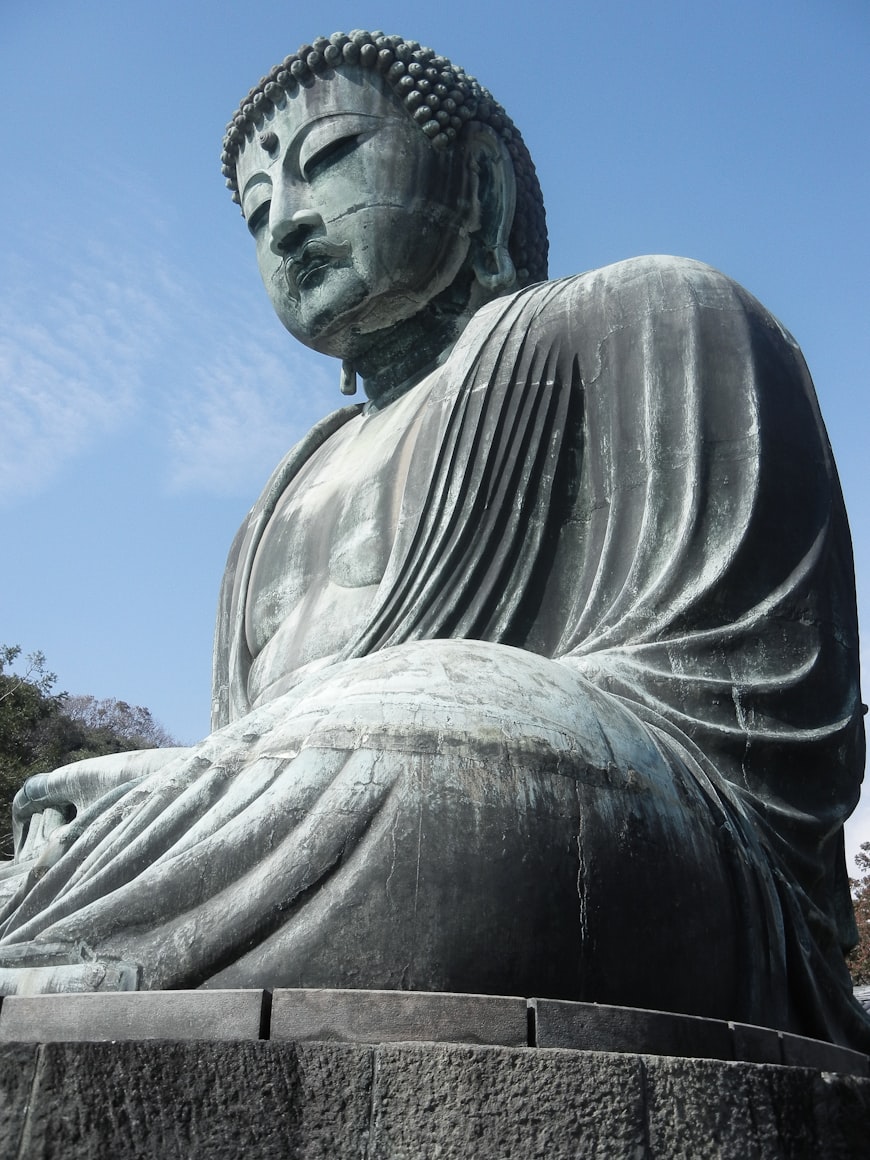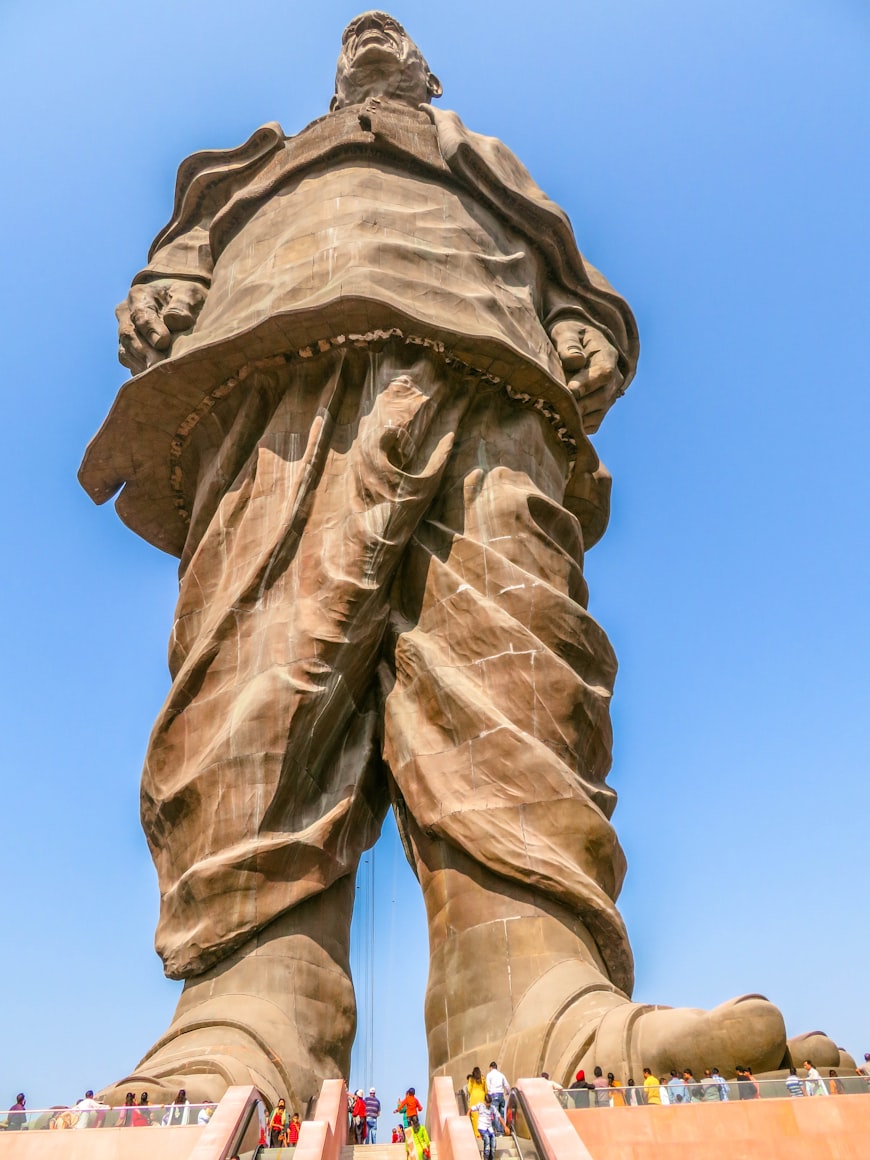Introduction
Large bronze Statues are imposing works of art that command attention. They are often life-size or larger, and their grandeur is undeniable. These sculptures, made from the molten alloy of copper and tin, Bronze, are known for their durability and beauty.
Monumental bronze sculptures have been created for centuries, and they can be found in public spaces all over the world. They are often used to commemorate important events or people, and they can also be used to add beauty to a cityscape simply.
When you see a monumental bronze sculpture, it is hard not to be awestruck by its size and power. These sculptures are a testament to the human spirit and inspire us to dream big.
The Historical Significance Of Monumental Sculptures
Monumental sculptures hold a profound historical significance across diverse civilizations, serving as tangible reflections of cultural, religious, and political ideologies. From ancient civilizations like Egypt, Mesopotamia, and Greece to the Renaissance and beyond, monumental sculptures have left an indelible mark on human history. Monumental sculptures hold a profound historical significance across diverse civilizations, serving as tangible reflections of cultural, religious, and political ideologies. From ancient civilizations like Egypt, Mesopotamia, and Greece to the Renaissance and beyond, monumental sculptures have left an indelible mark on human history.
Bronze, renowned for its strength, durability, and malleability, has long been favored for creating these large-scale works. Its inherent qualities allowed ancient sculptors to mold and shape massive statues that stood the test of time. The casting process involved meticulous craftsmanship and technical expertise, resulting in monumental bronze sculptures that became enduring symbols of power, spirituality, and artistic excellence.
Bronze’s association with monumentality can be observed in iconic works such as the Colossus of Rhodes, the bronze sculptures of ancient Chinese emperors, and Michelangelo’s David. These awe-inspiring creations, often surpassing human proportions, communicated the might and majesty of empires, celebrated deities, or immortalized significant individuals.
The historical significance of monumental bronze sculptures lies not only in their physical presence but also in the narratives and values they represent. They serve as cultural artifacts, providing glimpses into the beliefs, aesthetics, and aspirations of past civilizations. Today, these monumental sculptures inspire and provoke contemplation, bridging the gap between ancient and modern societies and reminding us of our collective artistic heritage.
Famous Monumental Bronze Sculptures
Let’s take a look at some of the Monumental Bronze sculptures that have cast impressions larger than their size in the hearts and minds of their observers;
- The Colossus of Rhodes
- The Statue of Liberty
- The Great Buddha of Kamakura
- The Statue of Unity
- Spring Temple Buddha
The Colossus of Rhodes (c. 280 BCE, Rhodes, Greece)
The Colossus of Rhodes was a Large Bronze Statue of the Greek sun god Helios, erected in the ancient Greek city of Rhodes on the Greek island of the same name. One of the Seven Wonders of the Ancient World, it was constructed to celebrate the successful defense of Rhodes City against an attack by Demetrius Poliorcetes, who had besieged it for a year with a large army and navy.
The Colossus of Rhodes was approximately 70 cubits, or 33 meters (108 feet) high – approximately the height of the modern Statue of Liberty from feet to crown – making it the tallest statue in the ancient world. It was made of bronze and iron and is estimated to have weighed around 30,000 tonnes.
The Colossus of Rhodes was completed in 280 BC and stood for just over 50 years before it was destroyed by an earthquake in 226 BC. The fallen Colossus was left in place until 654 CE when Arabian forces raided Rhodes and had the statue broken up and the bronze sold for scrap.

(Artist Rendition of The Colossus of Rhodes)
The Colossus of Rhodes was a truly monumental bronze sculpture. It stood on a triangular base that was approximately 15 meters (49 feet) high, and the statue itself was so large that its legs were spread apart as wide as the width of the harbor. The Colossus was said to have been so tall that ships could sail through its legs.
Another interesting feature of the Colossus of Rhodes was the way it was constructed. The statue was made of bronze plates that were fastened to an iron framework. This allowed the statue to be very light, despite its large size.
The Colossus of Rhodes was one of the most celebrated wonders of the ancient world. It was a symbol of the power and wealth of Rhodes, and it inspired artists and writers for centuries. The statue’s destruction was a great loss, but its legacy lives on. The Colossus of Rhodes is still considered one of the greatest engineering feats of the ancient world, and it remains a symbol of human ingenuity and ambition.
The Statue of Liberty (1886, New York, USA)
(Statue Of Liberty)
The Statue of Liberty is a colossal neoclassical sculpture on Liberty Island in New York Harbor in New York City, in the United States. The copper statue, a gift from the people of France to the people of the United States, was designed by French sculptor Frédéric Auguste Bartholdi and its metal framework was built by Gustave Eiffel. The statue was dedicated on October 28, 1886.
The Statue of Liberty is one of the most recognizable symbols in the world, and it is a popular tourist destination. It is 151 feet (46 m) tall from the base to the top of the torch, and it weighs 450,000 pounds (204,144 kg). The statue is made of copper sheets that were hammered into shape and then riveted together. The copper has oxidized over time to give the statue its distinctive green patina
The Statue of Liberty has several interesting features. The torch that she holds is a symbol of enlightenment, and it was originally lit by a gas flame. The tablet that she holds in her left-hand bears the date of the Declaration of Independence, July 4, 1776. The crown of the statue has seven spikes, which represent the seven seas and seven continents.
The Statue of Liberty is a powerful symbol of freedom and democracy. It has welcomed millions of immigrants to the United States, and it continues to inspire people around the world.
The Great Buddha of Kamakura (1252, Kamakura, Japan)
The Great Buddha of Kamakura (Kamakura Daibutsu) is a large bronze statue of Amida Buddha, located in the Kotoku-in temple in Kamakura, Japan. It is one of the most famous landmarks in Japan and is a UNESCO World Heritage Site.
(Great Buddha of Kamakura)
The statue is 13.35 meters (43.8 ft) tall and weighs 93 tonnes (103 tons). It was cast in 1252, during the Kamakura period, and is the second largest bronze Buddha statue in Japan, after the Great Buddha of Nara.
The statue is hollow, and visitors can climb inside to see the interior. The interior is decorated with Buddhist paintings and sculptures.
One of the most interesting features of the Great Buddha is the way it was cast. The statue was cast in a single piece, which was a very difficult feat to accomplish at the time. The statue was cast using the lost-wax method, which is a complex and time-consuming process.
The Great Buddha of Kamakura is a national treasure of Japan and is a popular tourist destination. The statue is a reminder of the rich history and culture of Japan and is a symbol of peace and serenity.
Here are some other interesting facts about the Great Buddha of Kamakura:
The statue is made of bronze that was melted down from Chinese coins. It was originally housed in a temple hall, but the hall was destroyed by a tsunami in 1498. The statue has been damaged by earthquakes and typhoons over the years, but it has been restored each time
If you are ever in Japan, be sure to visit the Great Buddha of Kamakura. It is a truly awe-inspiring sight and a reminder of the beauty and history of Japan.
The Statue of Unity (2018, Gujarat, India)
The Statue of Unity is a large bronze statue of Indian statesman and independence activist Vallabhbhai Patel (1875–1950), who was the first deputy prime minister and home minister of independent India and an adherent of Mahatma Gandhi. The statue is located in Gujarat, India, on the Narmada River in the Kevadiya colony, facing the Sardar Sarovar Dam 100 kilometers (62 mi) southeast of the city of Vadodara.
It is the world’s tallest statue, with a height of 182 meters (597 ft), and is dedicated to Patel’s role in uniting the 562 princely states of India into the single Union of India
(Statue of Unity)
The large bronze statue was built by a Public Private Partnership model, with most of the money coming from the Government of Gujarat. The construction of the statue began in 2013 and was completed in 2018. The statue was inaugurated on 31 October 2018, on Patel’s 143rd birth anniversary.
The Statue of Unity is made of bronze cladding over a steel frame and weighs 6,000 tonnes. It is the tallest statue in the world and is taller than the Statue of Liberty by more than twice its height.
The statue has a number of interesting features. For example, it has a viewing gallery at the top of the head, which offers panoramic views of the surrounding area. The statue also has a museum, which tells the story of Patel’s life and achievements.
The Statue of Unity is a popular tourist destination and attracts millions of visitors each year. It is a symbol of national pride in India and is a reminder of Patel’s role in uniting the country.
Here are some other interesting facts about the Statue of Unity:
The statue is made up of 6,000 tonnes of bronze, which is equivalent to the weight of 500 elephants. Its foundation is 57 meters (187 ft) deep, which is as deep as a 20-story building.
The statue’s viewing gallery can accommodate up to 200 people at a time. The statue is lit up at night and can be seen from up to 30 kilometers (19 mi) away.
The Statue of Unity is a truly monumental statue and is a testament to the vision and determination of those who built it. It is a symbol of national pride in India and is a reminder of Patel’s role in uniting the country.
Spring Temple Buddha Statue
The Spring Temple Buddha is a large bronze statue of Vairocana Buddha located in the Henan province of China. It is the second-tallest statue in the world, after the Statue of Unity in India. The Spring Temple Buddha is made of copper and is 128 meters (420 feet) tall, not including the lotus throne on which it sits. The total height of the statue, including the throne, is 208 meters (682 feet). The statue weighs 1,100 tonnes.

(Spring Temple Buddha)
The Spring Temple Buddha was built between 1997 and 2008. It was built by the Chinese Chan Buddhist sect of Fo Guang Shan. The statue is located in the Fodushan Scenic Area, which is a popular tourist destination in China.
The Spring Temple Buddha is a significant cultural and religious landmark in China. It is a popular pilgrimage destination for Buddhists from all over the world. The statue is also a popular tourist attraction, and it is estimated that over 10 million people visit the statue each year.
In addition to its size and weight, the Spring Temple Buddha is also notable for its intricate details. The statue’s face is serene and peaceful, and its robes are beautifully decorated. The statue’s eyes are made of crystal, and they are said to reflect the light of the sun and moon.
The Spring Temple Buddha is a monumental bronze sculpture that is a testament to the skill and artistry of the Chinese people. It is a symbol of peace, hope, and enlightenment, and it is a must-see for anyone visiting China.
Post time: Jul-10-2023




